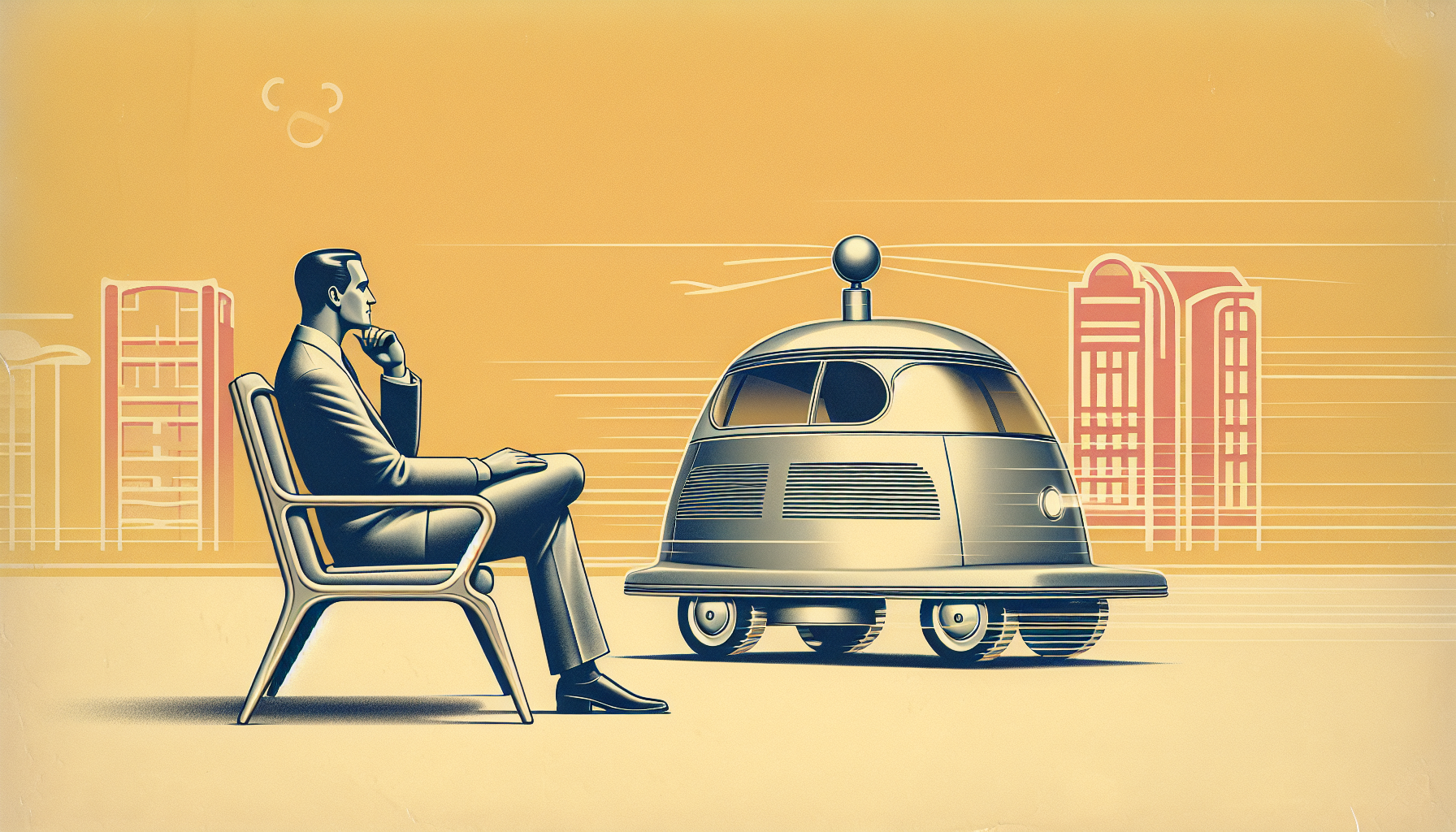When it comes to autonomous vehicles—those self-driving marvels that promise to ferry us from place to place while we snooze, text, or contemplate the meaning of life—there’s one question that just won’t die. If you talk to engineers, philosophers, or practically any cab driver with time on their hands, the conversation eventually returns to a 1960s thought experiment known as the trolley problem. The trolley problem is moral philosophy’s equivalent of the bad penny. It keeps turning up, and it reminds us just how tangled the web of ethical decision-making can be, especially when it’s not a person at the wheel, but an algorithm.
So, what is this perennial problem, and why does it matter for the future of our roads?
The Trolley Problem: Old Tracks, New Wheels
The trolley problem is deliciously simple on the surface. A runaway trolley is careening down the tracks toward five people. You stand at a switch; flip it, and the trolley diverts onto another track, where it will hit one person. Do you pull the lever and sacrifice one to save five?
In philosophy seminars, this leads to heated discussions about utilitarianism (the greatest good for the greatest number), deontology (rules and duties), and whether you should have just missed the 8:15 train altogether. For human beings, this dilemma is hard—so hard that we tend to avoid facing it in real life. But for autonomous vehicles, it’s no longer hypothetical.
Imagine the self-driving car barrelling down a suburban street. Suddenly, a group of pedestrians jumps into its path. Swerving will protect the group but imperil the lone cyclist in the bike lane. What’s the car to do? And—here’s the uncomfortable part—who decides what it should do?
Teaching Ethics to Brainless Brains
We’d love to believe that artificial intelligence can usher in a golden age of road safety. After all, robots don’t drink, get tired, text their mothers while driving, or hold grudges against other motorists (yet). But when it comes to split-second moral dilemmas, AI faces a significant limitation: it doesn’t actually “understand” morality. It simply executes instructions.
So, someone needs to instruct it. This isn’t easy, because we humans can’t agree among ourselves. One society’s do-no-harm may be another’s greatest-good-for-the-greatest-number. Cultural values, legal frameworks, and raw human emotion all play a role. Add to this the fact that cars cross borders, and the tangle thickens.
Should manufacturers program cars to protect their passengers at any cost, forsaking pedestrians? Or should they minimize overall harm, even if it means little Timmy in the backseat is out of luck? Worse, should you—the buyer—get to choose your car’s moral alignment, like picking a video game avatar but with, you know, real lives at stake?
Practical (Im)possibilities
It’s tempting to wish for an easy answer, but the details create headaches. First, most urgent “trolley” scenarios on roads involve unpredictable variables. Trajectories, speeds, weather, intent, and even random chance all limit what anyone (driver or algorithm) can foresee in a crisis. If you’ve ever braked for a squirrel only to realize you almost hit a mailbox, you’ll understand.
Even with perfect sensors and reaction times, it’s almost impossible to guarantee outcomes. The AI isn’t pulling philosophical levers. More often, it’s estimating chances, picking the least-worst option in a blur of milliseconds, and then hoping its calculations are correct. Not quite the calm deliberation of a moral sage.
But that’s no excuse to throw up our hands. Even if we can’t engineer pure morality, we can—perhaps—engineer something better than the flawed instincts of humans. After all, people have been making life-or-death driving decisions for more than a century, often with overconfidence and terrible judgment. If autonomous vehicles at least document their reasoning, improve over time, and are transparent about their limits, that’s already progress.
Who’s Responsible, Anyway?
All roads in autonomous vehicle debates eventually lead to the question of responsibility. When an accident occurs, who is at fault? The manufacturer, the coder, the owner, society itself? Unlike humans, cars don’t carry guilt, remorse, or insurance policies in their glove boxes.
Legal systems face unprecedented challenges. Who do we put on trial—a fleet manager, a software developer, or the line of code itself? Here, we must revisit not just the trolley problem, but the centuries-old social contracts that underpin our entire concept of morality and responsibility.
Don’t expect the answer to be delivered by drone anytime soon.
A Mirror for Humanity
At heart, the trolley problem isn’t really about trolleys, cars, or even AI. It’s about us. Whenever we try to encode morality into a machine, we run up against the jagged edges of our own beliefs and ambiguities. We want absolutes (“never harm innocents!”) but reality delivers chaos (“all available choices are terrible!”).
Perhaps the real value of asking these questions is that they force us to reflect more honestly on ourselves. Moral dilemmas may challenge programmers and engineers, but they also challenge each of us to think harder about what matters most in the moments that count.
If autonomous vehicles lead to fewer accidents overall, the messy question of rare, inescapable dilemmas may be worth enduring. Better a thousand clear roads than one neat trolley problem. But as we delegate more decision-making power to machines, we must stay vigilant, humble, and perhaps even a bit philosophical.
After all, even Socrates never had to explain his ethics to a self-driving minivan.
Final Thoughts: Stay in the Driver’s Seat (Metaphorically Speaking)
As we gaze down the road to a world of autonomous vehicles, we should remember: the trolley problem may never be solved, only better understood. The best we can do is keep asking questions—and make sure we’re the ones setting the destination, even if we’ve handed over the steering wheel.
And if you see a philosopher at the next crossroads—perhaps give them a ride. They like to think, but even they can’t outrun a trolley.

Leave a Reply